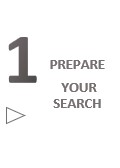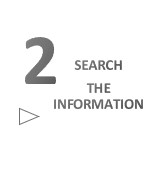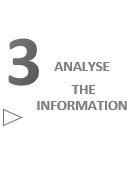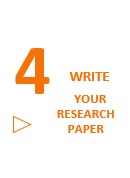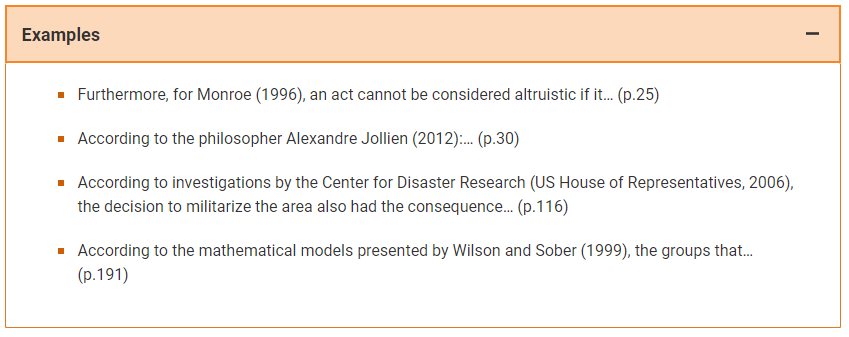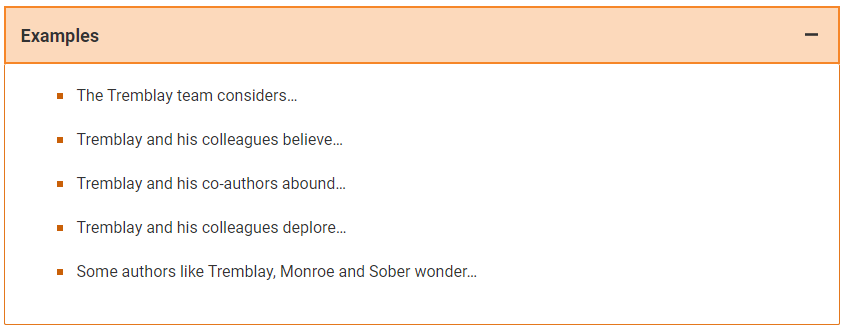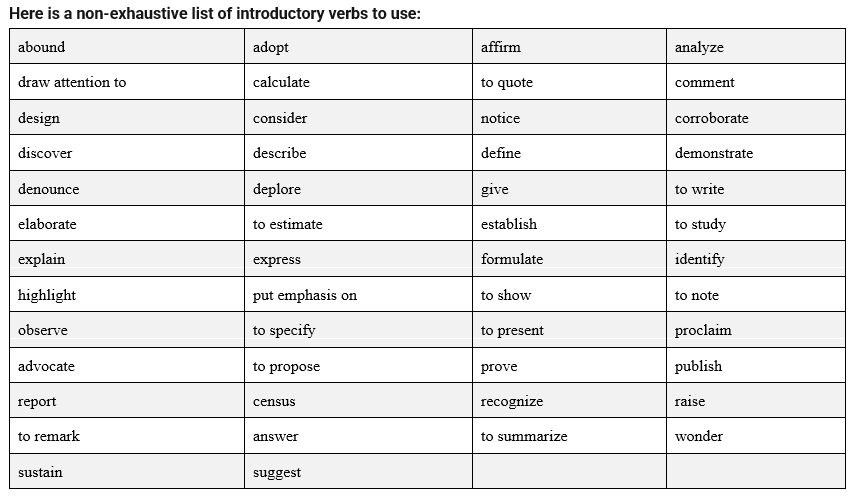Mentioning the source of information used in writing work can take different forms. This section explores the general principles and shows concretely how to insert and format quotes.
![]() Objective
Objective
- Know the different methods for properly citing your sources.
![]()
![]()
Quotation is the “action of quoting, reporting someone’s words or sentences; words, passages borrowed from an author or someone who is an authority.” Little Robert
![]()
Above all, to avoid ending up with an academic infraction sanction ranging from probation to expulsion and seeing a permanent mention in the university record. But also for :
- Respect Canadian copyright law.
- Give credibility to the work.
- Demonstrate scientific rigor.
- Allow the reader to go back to the source.
![]()
The source must be cited whenever an idea or research result of which we are not the author directly influences the content of our work.
To quote:
- Paraphrasing as well as word-for-word quotations
- It does not matter whether the medium of the citation is paper or digital or online.
Do not quote:
- The idea or fact which is common knowledge ie known to a large majority of people and identifiable in various sources of information.
Ex.: Under normal conditions, water boils at 100 C. - Dates of important events as well as certain expressions.
Ex.: The Great Darkness, The attacks of September 11, 2001.
![]()
![]()
In research work, you must indicate the source of citations in 2 places:
- In the text, cite abbreviatedly.
- At the end of the text, create a bibliography and fully cite all sources.
The method chosen, either author-date, classic or numbered, always determines the formatting of the source.
![]()
Paraphrasing is when an author's idea is reported in our own words.
- The source must be mentioned in an abbreviated manner at the beginning or end of the paraphrase.
- Don't forget to put the full reference in the bibliography.
Click on a method to view the corresponding citation practice.
![]()
In the case of a quote copied verbatim, the formatting must take into account the length of the extract.
Short quote (less than three lines)
- Place it inside the text between French quotation marks (“ ”);
- Follow it with mention of the source (without forgetting the bibliography).
Long quote (three lines or more):
- Present it indented with margins of 1 cm on either side of the main text;
- Separate it from the main text by double spacing;
- Use single spacing for the extract quoted verbatim;
- Follow it with mention of the source (without forgetting the bibliography).
![]() Golden rule
Golden rule
Each line quoted verbatim should be associated with at least two lines of analysis ( plagiarism.org )
![]()
![]()
To cite a quotation for which the original source is not available, credit not only the source from which it was taken, but also the original source. Use phrases like “cited in” or “cited by.” However, only the source actually consulted will appear in the bibliography. The original source is integrated into the text or as a footnote. See the following examples.
Text content
![]() In the bibliography, indicate only the source that was consulted and not the source of the quote already cited by someone.
In the bibliography, indicate only the source that was consulted and not the source of the quote already cited by someone.
Tables and/or graphs
![]() Use the formula “taken from” to introduce mention of the source.
Use the formula “taken from” to introduce mention of the source.
![]()
Language understood by readers
There is no need to translate the passage when it is reasonable to believe that our readers understand the original language of the quoted extract.
The same rules as for text quoted verbatim apply.
Original language that cannot be understood by readers
Knowing that the original language is misunderstood by readers, find a translation of the extract already published and cite it. If there is no translation, translate the extract yourself and put it in quotation marks. Add the mention [My translation].
![]()
When the text contains an error, do not correct it. Any doubtful term (mistake, typo, etc.) must be followed by [sic] to indicate that the original text is indeed worded this way.
![]()
Separate verses with an oblique slash preceded and followed by a space.
![]()
- When writing a text, opt for one of the three citation methods: author-date, numbered and classic. Use the same formatting until the job is finished. Take into account cases requiring a special presentation.
Infosphère / https://infosphere.uqam.ca 
1
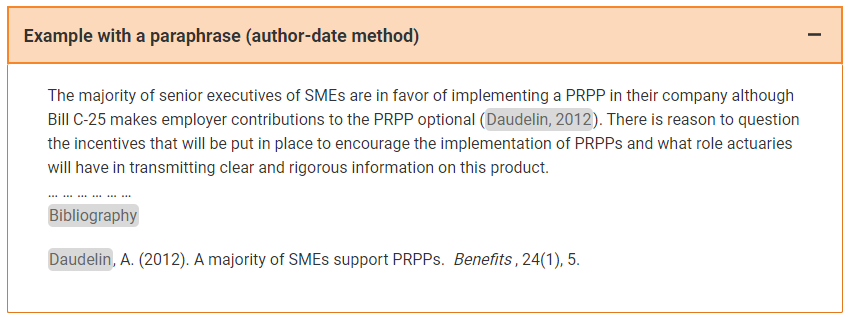
2
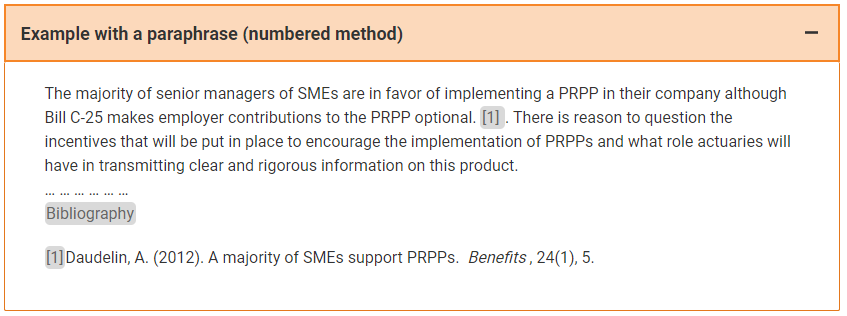
3
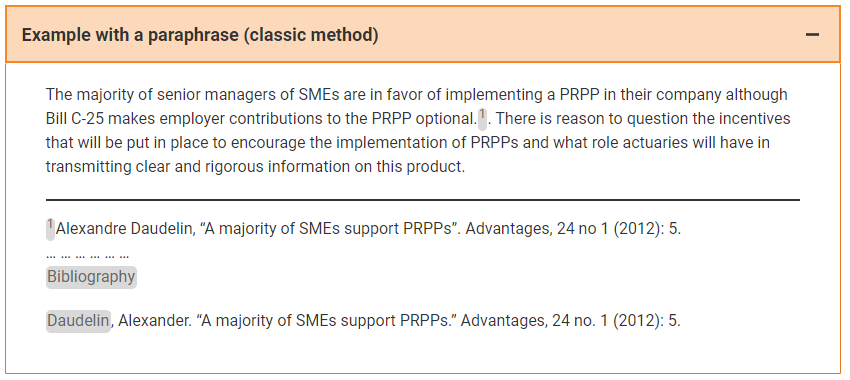
4

5

6

7

8

9

10
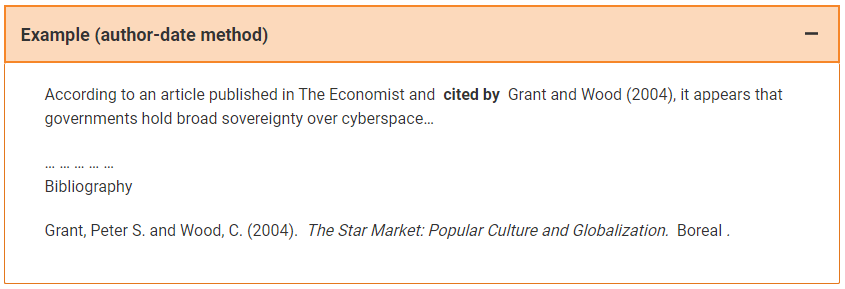
11

12
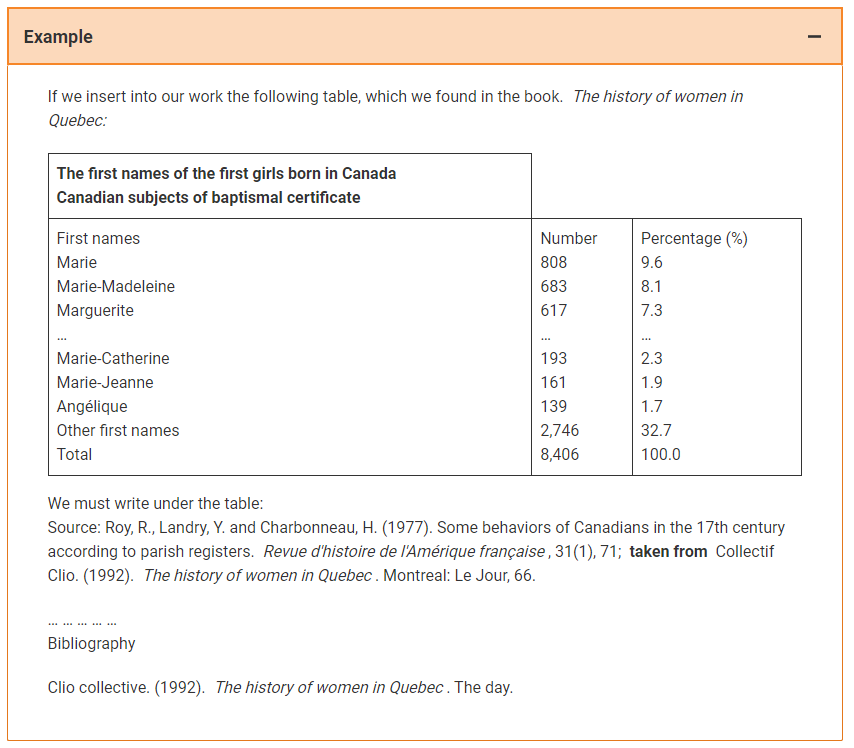
13

14
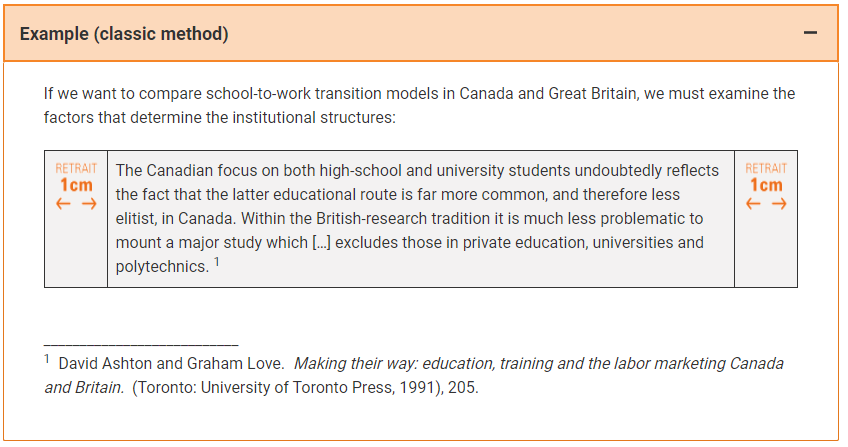
15
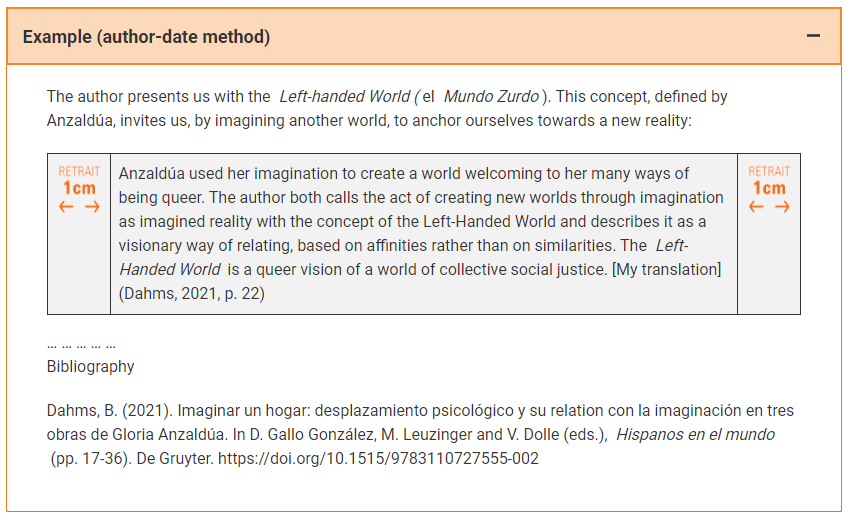
16
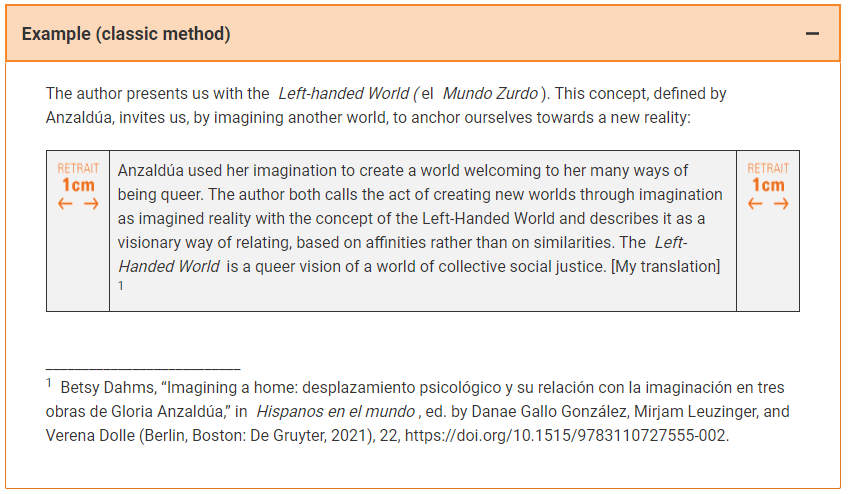
17

18



